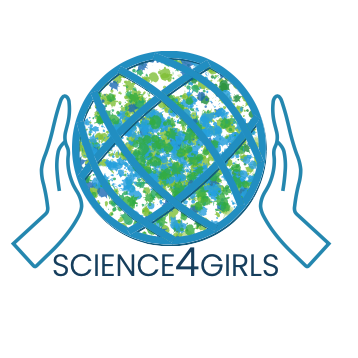THE CHALLENGE
Several initiatives promoted by the European Commission have tried to make science education more attractive to girls, and to encourage them to a life in science. However, science education and science jobs are still not attractive to most girls in the EU. Some Erasmus+ have addressed this challenge, but we believe many remain in what we can call “modernisation” of traditional science learning, including forms of “girlification” that mostly do not fundamentally change female students’ images of science.
We have a historic opportunity to go much deeper, to take the girls’ values seriously, and by doing so foster motivation towards science and its transformational societal change, and start developing more fundamental changes in science learning.
This opportunity has two factors:
1. The EU Commissions’ promotion of open science schooling (OSS) as the most powerful innovation of science learning, including applying a responsible science approach.
2. The urgency for all youth to address climate change at all educational levels.
Climate change education is now included as priority in the Erasmus+ programme. The combination of including female values and concerns, OSS, and climate change engagement is the most powerful combination to make science and a life in science attractive to girls. More specifically:
- OSS offers to work critically with science, to address important science challenges, and to engage in collaboration with community players.
- Learning science through climate change prevention offers opportunities to create images of science presenting them as extremely useful to society and to protect new generations from imminent disasters.
KEY GOAL
Key Goal
Investigate and create an innovative methodology to make science learning in secondary school attractive to girls:
- It will engage teams of teenage female students in science missions in their community, addressing climate change challenges. By opening up the doors to real-life science and climate change, girls are encouraged to develop critical views on science and to interact with community resources engaged in science and climate change.
- They will learn science through this OSS methodology and through engaging deeply and long-term in local climate change missions, linking science topics and following their own motivations. Girls will be able to create images of responsible science, discover how science and climate change affect citizens and create their own images of value-based science.
- Science teachers will organise time-outs during the missions for science knowledge creation when relevant: knowledge on demand and when needed, not when scheduled.
- Girls will explore the community and identify what they, based on their values, consider the most important local climate change prevention; they will design their missions, and work with community resources to accomplish them. Girls will create their own story-telling from the missions to create their voices.
The project also intends to engage with the wider educational community and will be building tools to allow others to join our efforts and contribute to the main goal stated.
Research goals
Research goals
IO4 – Research Agenda of Science4Girls The Intellectual Output 4 (IO4) of the Erasmus+ Science4Girls project is concerned with exploring how the methodology of Open Science Schooling (OSS) can support girls’ (re-)engagement in STEM science and render science an interesting and viable career opportunity in the future. The research objectives of the project are: to identify what characteristics of OSS make STEM science more attractive to study for the girl students, and to understand how the Science4Girls’ focus on climate change promotes girls’ increased interest in STEM. To fulfil these research objectives, the research team in Science4Girls explores how the girl students engage in science learning when it is OSS that is additionally focused on climate change. Researchers investigate what image of STEM science do the girl students hold as they enter the Science4Girls project and how, if at all, this image is re-defined as a result of the project implementation. Related to that, the scientific investigations delve into the questions what academic perceptions the girl students have of themselves at the outset of the project, and how, if at all, these perceptions change as a result of the project implementation. Because both, the image of science and girls’ self-perception as scientists are deeply rooted in the norms and stereotypes regarding gender and science, the research sheds light on the gender norms in science that discriminate against girls and ponders how these norms can be challenged by the OSS methodology. Finally, researchers also explore the role of influential others, that is teachers, parents and guardians, other important family members and peers in influencing girls’ interest in science and their motivation or lack of thereof to engage in science professionally and sustainably.
